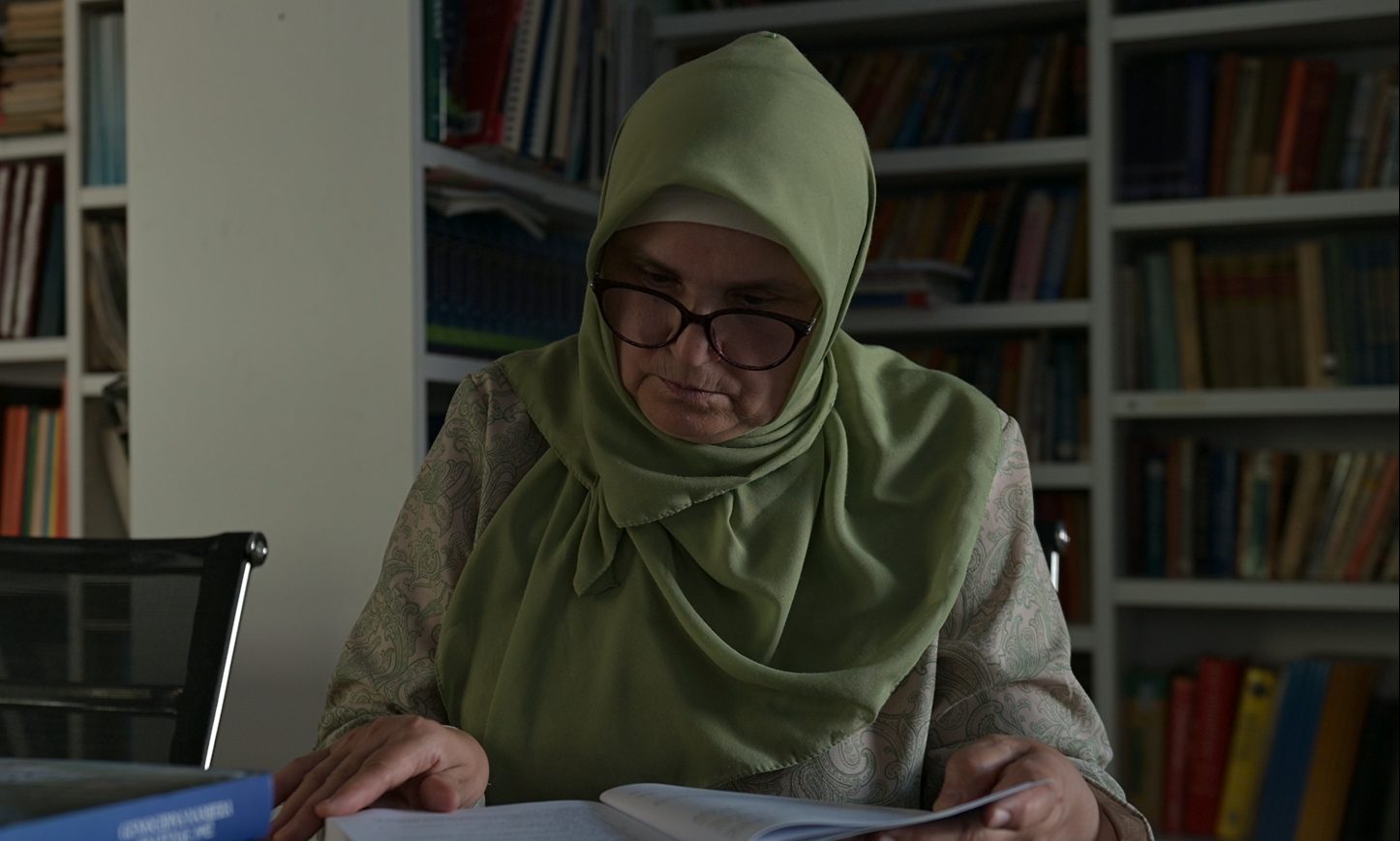This post is also available in: Bosnian
In the letter, which she has kept to this day, she learned that her family was killed in Snagovo – her father Dzevahir and mother Hurija, brother Omer, his wife Zlatija and their two children: daughter Fatima and son Dzevahir, who was named after his grandfather. There was also her cousin Edin Hrustic, who almost 18.
Ziba found out that her Serb neighbours brought two buses to Kusonje – one for the men and the other for the women and children.
“They took the women and children towards Kladanj and the men to the Susica detention camp, while my seven family members took refuge in the village and made a shelter, in a nearby forest. They would come home during the day and cook some food so they could survive. And at night they would sleep in that forest,” says Ziba.
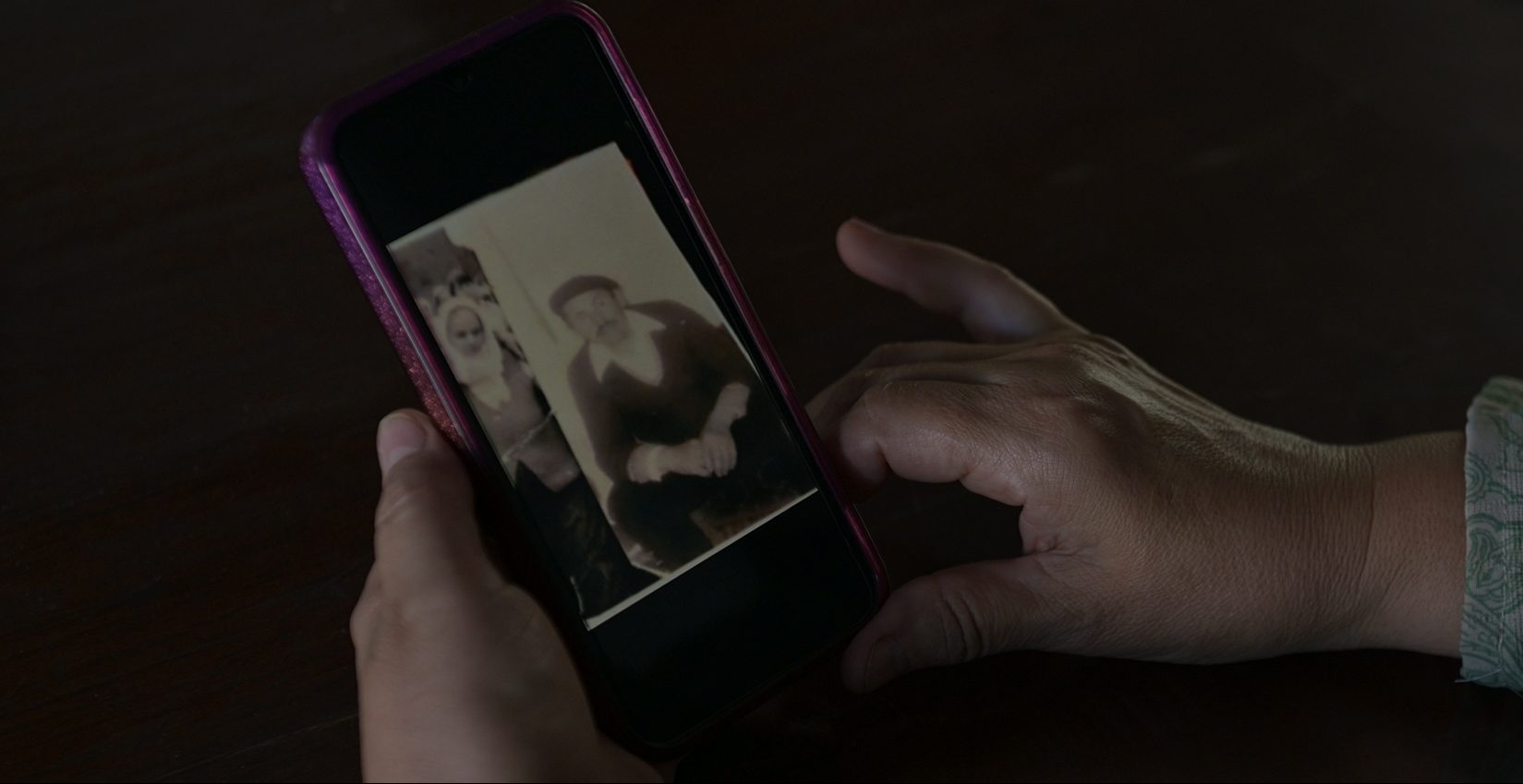
Photos of Ziba Kavazović’s parents. Photo: Detektor
She last saw her parents in May 1992 when they temporarily took refuge in the village of Mahala, where she lived with her husband and child. Her brother Haso was among the men taken to the Susica camp. Haso would then spend another 14 months in the Batkovic detention camp.
“Many stayed behind in Kusonje. They were captured and killed, one by one. My family was captured when they arrived at that house in late June,” says Ziba.
“The Serbs noticed smoke from the old house, since we had those four houses, and the old one had no chimneys, and the smoke would spread when the fire was lit. And after they were captured, they were taken to Snagovo, near the primary school, where they were handed over to the White Eagles [paramilitary group] and that’s where their ordeal started – first abuse, then killings,” she adds.
She gave the information from the letter to the State Investigation and Protection Agency (SIPA) and the Missing Persons Institute of Bosnia and Herzegovina. One of the pieces of information in it was that her family was buried in the village of Jasikovci, between Kamenica and Snagovo.
“The Sarajevo-Zvornik gas pipeline runs through there. They allegedly dug a big hole, which they then concreted over, under those pipes. Apparently, my people are there. We don’t have any solid info really,” says Ziba.
“Even if it was dug up, all the concrete would have to be removed, so that’s the last information about their whereabouts,” she added.
Hope of finding her relatives is fading.
“I would call on everyone who has knowledge about their remains to awaken their conscience, to speak up, even if it’s after 33 years. To try walking in my shoes,” says Ziba.
“I would like to find peace, like any other person. There isn’t just one of them, but seven. Who wouldn’t like to find their dead, to find peace? For me to go to their grave, to pray, so I would be at rest too, so my soul can rest. Like every human being, I would love that.”
Dreams silenced forever
The worst thing for Ziba has been the loss of her children. As she shows us a picture of her nephew Edin Hrustic from a primary school competition, she tells us how smart he was, and how he had dreams of becoming a pilot.
“He passed his exams in Sarajevo and then he enrolled in the Mathematics and Physics Secondary School in Zvornik. He was in his junior year when he was killed. An excellent student, getting As in every subject, like he was top of his class. In his junior year, they set up computer classes, and there were plans to employ them at the aluminium factory in Zvornik,” says Ziba.
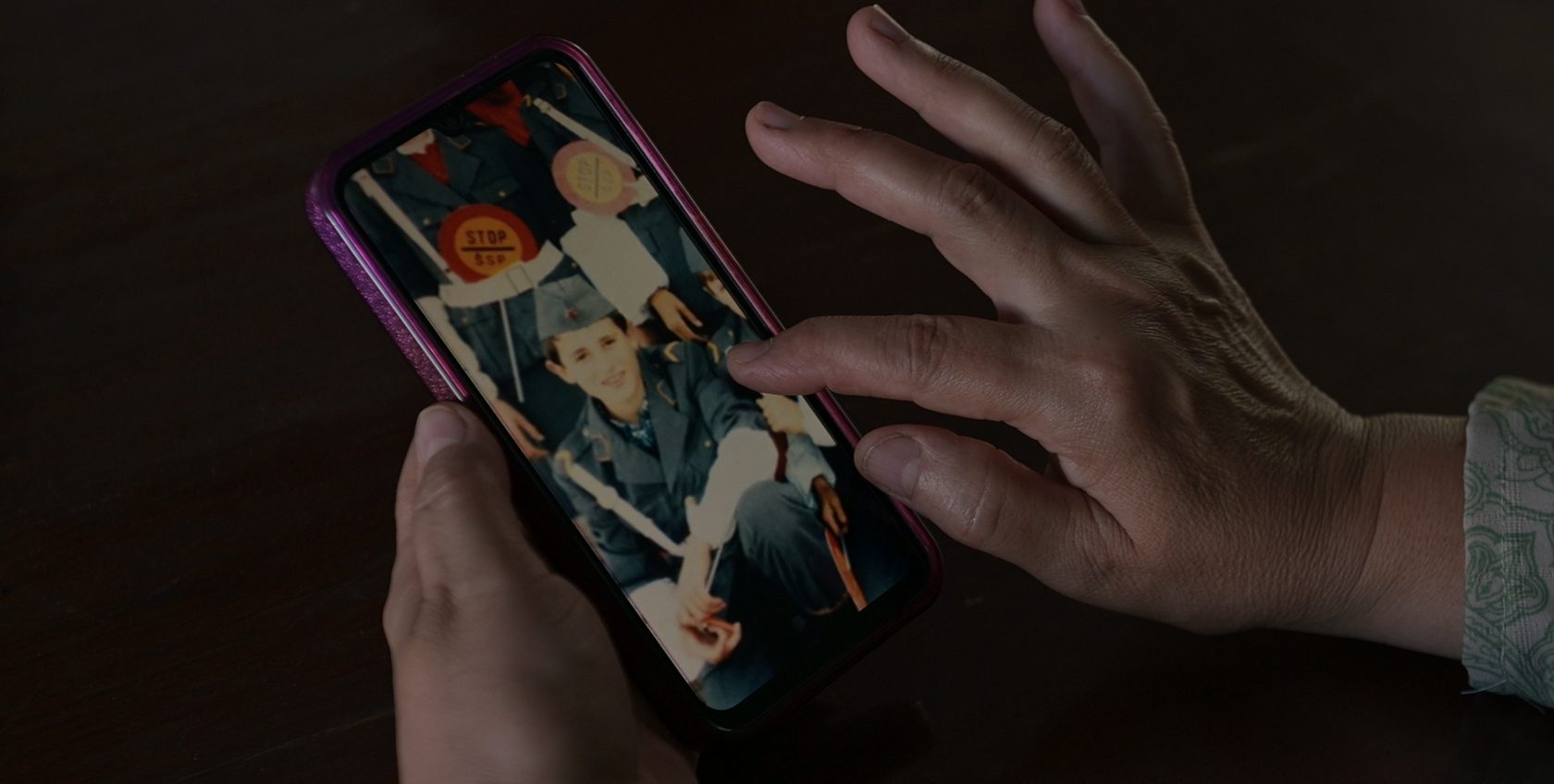
Ziba Kavazović shows a picture of her’s cousin Edin, who was killed when he was 17 years old. Photo: Detektor
She notes that the boy was the only one of his immediate relatives who did not survive. His mother was bussed to Kladanj from Kusonje with his two sisters and his father, Ziba’s brother. His father Haso survived the camps.
Edin was tall, with black hair and dark eyes, a chess champion in a competition for primary schools in Tuzla in 1988, according to Ziba.
“He loved comics and football, and he spoke softly. I went to his parent-teacher conference in Zvornik. He loved everyone. We often talked about everything, about the dreams that didn’t come true because he didn’t live long enough,” she recalls.
Of the family photos, she managed to save one of her brother Omer, who was killed with his wife and two children.
“His children were Fatima, born in 1980, and Dzevahir, born in 1982. Fatima, although 12, had the build of an 18-year-old girl. She had brown eyes and blonder hair, much like my sister-in-law Zlatija, her mother. She was a hard-working girl who would be helping her grandmother. She loved to cook, she was in fifth grade,” says Ziba.
She says her brother’s son Dzevahir was nicknamed Vajta as he loved listening to the music of singer Seid Memic Vajta.
“But he didn’t like to sing – that wasn’t for him, he’d say. He liked to play marbles. He was blond and a bit chubby. He used to say that he would be a driver when he grew up, like his father,” says Ziba.
Brothers Omer, Haso and Dzevad built their own houses in Kusonje, and their parents lived in a fourth house.
“I was the last to get married and leave home in the early nineties. When Omer would return on Friday nights from Belgrade, where he worked, the first place we’d go was Haso’s house, and we would drink coffee there until late at night and spend time together. The next day, breakfast would be at the other brother’s,” she recalls.
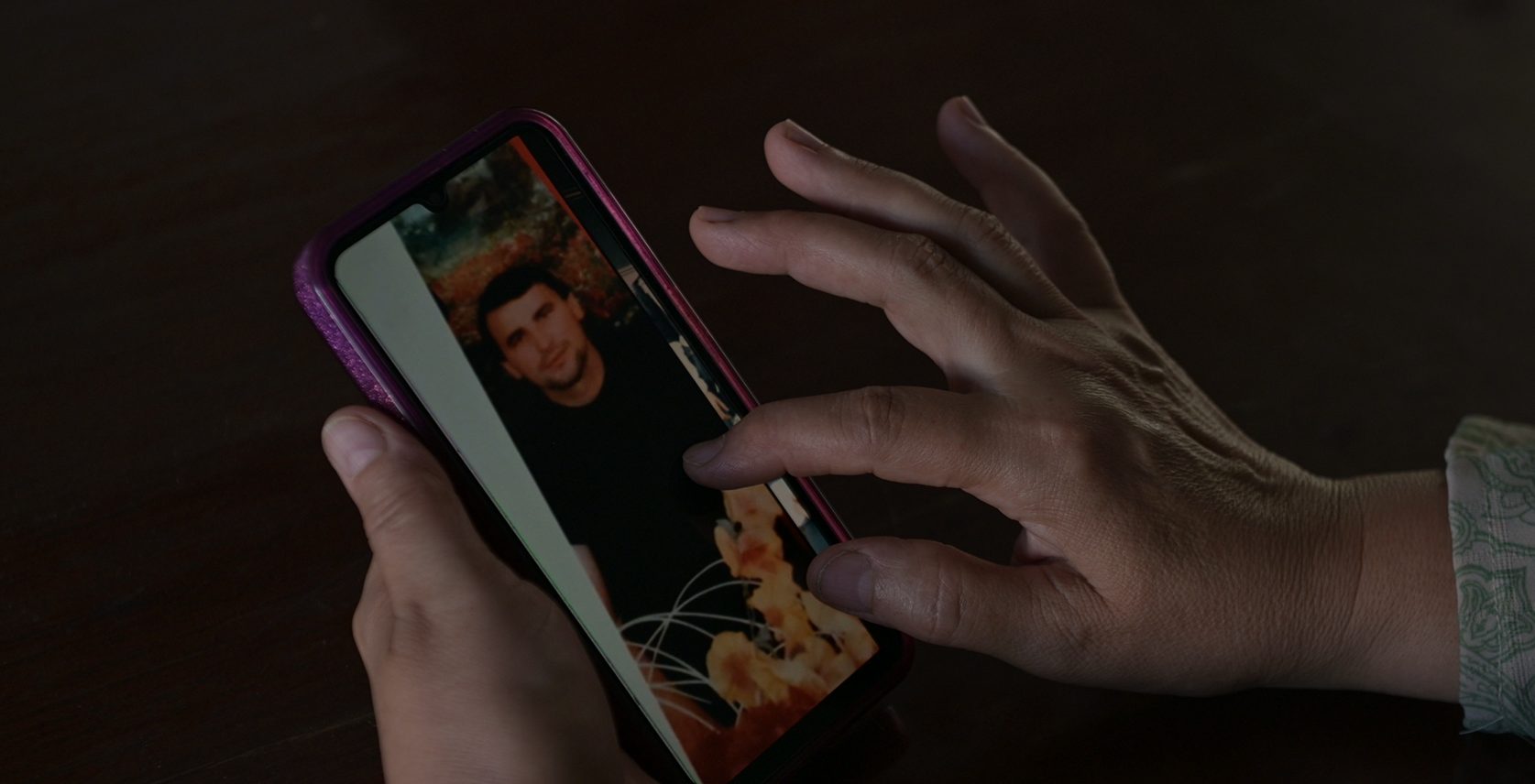
Photo of Ziba’s brother Omer, who was killed in Snagovo. Photo: Detektor
Finding her relatives’ remains would mean a huge amount to her.
“I think I would find some peace in my soul, that it’d be much easier for me, although I can never forgive whoever did this to them, because after all, they were innocent children,” Ziba points out, adding that she is still having a hard time coping with the loss.
None of her surviving family members has returned to Kusonje.
“There are days with thoughts running through your head, there are nights when you can’t fall asleep until four or five, or at all – you wake up and go to work. There are days when you have to fight because you have your own two children. You have to fight for their sake, to put them on the right track, to set a good example,” says Ziba.
Another 50 still missing
Ziba’s family members were on a list of 158 people who went missing from the eastern part of the Kalesija municipality – what is now the municipality of Osmaci in Republika Srpska. Three of her brothers’ children, minors at the time, are still on the missing persons list.
“Thirty-two are missing from the village of Kusonje, while 108 have been identified and buried in the Gornja Kalesija Memorial Centre and some in local cemeteries. We are still searching for 50 more. There are those whom we have no clue as to how they disappeared,” Muradif Burekovic, president of the Kalesija 1992 Association of Families of Captured and Missing Persons, tells Detektor.
Burekovic says that for years he has been asking the Prosecutor’s Office of Bosnia and Herzegovina to receive a delegation of victims from Kalesija so they can report certain individuals they deem responsible for the crimes that were committed
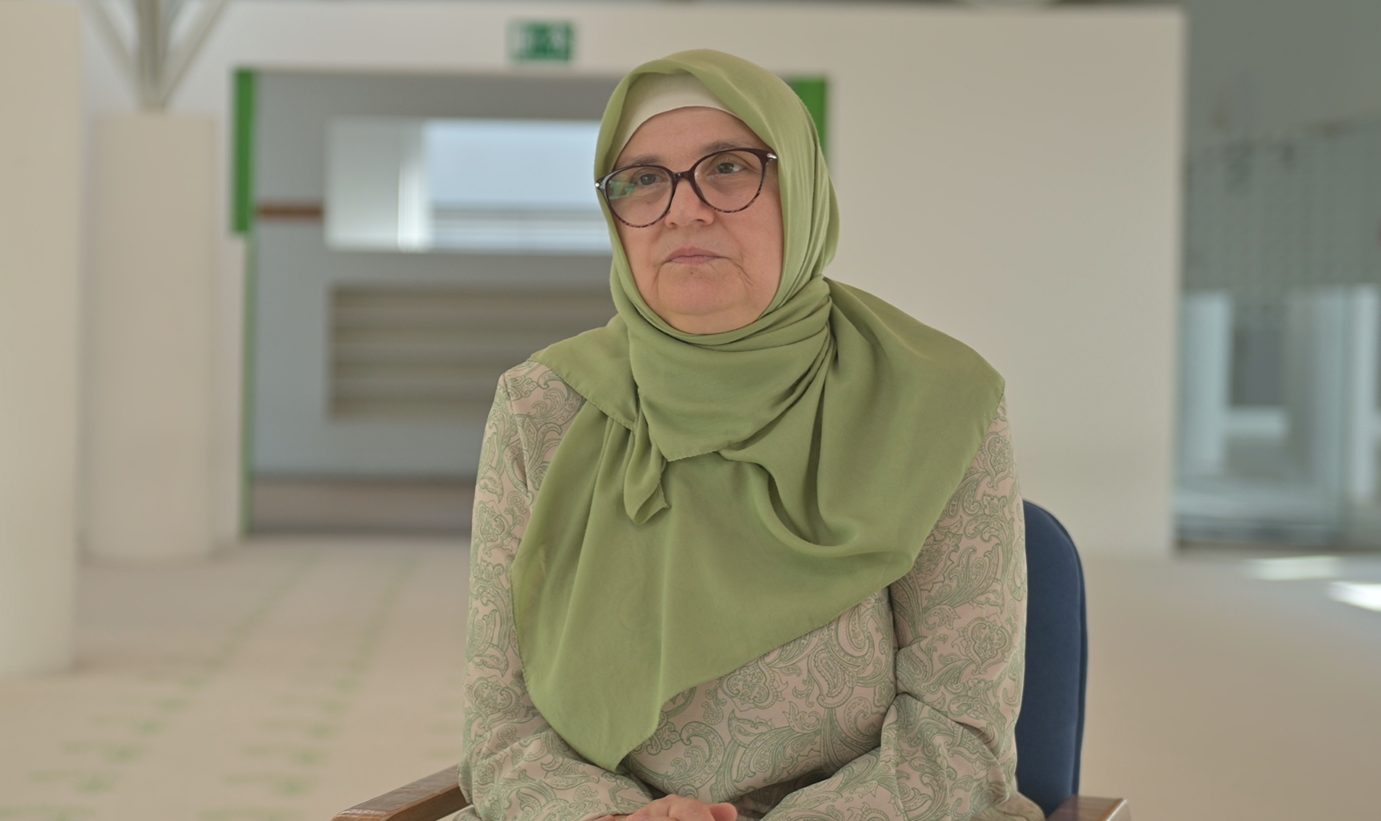
Ziba Kavazović learned of her family’s fate through a letter, yet she never managed to find them. Photo: Detektor
The names of 97 civilian victims of war are inscribed on a memorial in Kalesija, of whom 35 are children, says Ramiz Suljkanovic, president of the Association of Civilian Victims of War. The information came to them from the local communities at the end of the war, but the list is not final, which is why they left blank spaces on the memorial.
“I sent all the prosecutors the names of the suspects, but no one has been prosecuted. I was at the [state-level] Prosecutor’s Office when Gordana Tadic was the chief prosecutor, and I used the opportunity to express my dissatisfaction with the work of certain prosecutors,” says Suljkanovic, whose daughter was killed in a shelling attack.
The Prosecutor’s Office of Bosnia and Herzegovina has several cases pending in the reporting or investigation stage concerning war crimes committed against Bosniaks in the Kalesija area in 1992, it told Detektor, although it said it cannot provide further details.
“Cases against a certain limited number of individuals were transferred to the Cantonal Court in Tuzla under a decision made by the Court of Bosnia and Herzegovina, and one case was concluded with a final and binding verdict,” stated the Prosecutor’s Office.
The Cantonal Prosecutor’s Office in Tuzla said one case with unknown perpetrators was transferred to it, in line with the state-level war crimes strategy. The case concerns the murder of a group of civilians from the village of Hamlijas in Kalesija on May 8, 1992.
“After the completion of the investigation, the Criminal Police Department of the Tuzla Canton Interior Ministry, in connection with the aforementioned events, submitted a report to this Prosecutor’s Office in May 2025 about the criminal offence that was committed against 25 individuals suspected of the criminal offence of war crimes against the civilian population. Along with the report, significant substantial pieces of evidence were also submitted,” the Tuzla Prosecutor’s Office stated. It noted that the identities of a large number of people suspected of killing eight civilians and injuring two others have been established.
It said that the findings of the investigation will be submitted to the of Prosecutor’s Office Bosnia and Herzegovina so it can decide whether further work on the case will be carried out in Tuzla, or whether it will be returned to the state-level Prosecutor’s Office.
The Court of Bosnia and Herzegovina acquitted a defendant called Zoran Jankovic of committing crimes in the municipality of Kalesija in 1992.
The indictment had claimed that on April 29, 1992, together with the commander of the Artillery Unit of the Army of Republika Srpska and paramilitaries in the village of Osmaci, which at the time was part of the municipality of Kalesija, Jankovic captured a group of Bosniak civilians and participated in killing 36 of them and wounding three others, as well as burning the bodies of the civilians who were killed.
Jankovic was also acquitted of participating in the forced deportation of the population of the villages of Seher and Lika, in the municipality of Kalesija, after they were captured during an armed attack on May 27, 1992.
After a plea agreement, the Higher Court in Belgrade sentenced Dragan Maksimovic to six years and two months in prison for war crimes against the civilian population for killing five Bosniak civilians, including three children, on June 16, 1992 in Caparde in what was then the Kalesija municipality. The youngest victim was three.
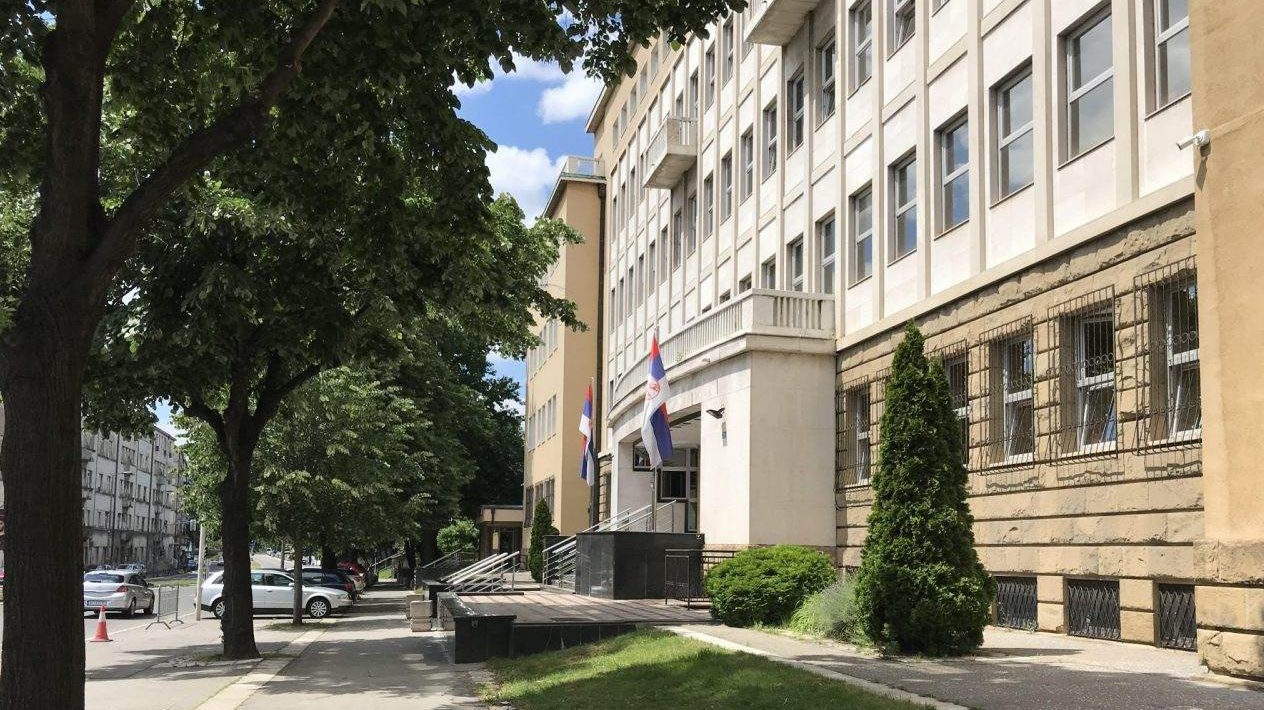
Higher Court in Belgrade. Photo: Detektor
In 2018, the Belgrade-based Humanitarian Law Centre NGO filed a criminal complaint against Svetozar Andric for ordering the “displacement” of the Bosniak population from Zvornik on May 28, 1992, and issuing the order to set up the Susica detention camp in Vlasenica.
The camp existed until September 30, 1992, and during that period, detainees were kept in inhumane conditions – they had to sleep on concrete and were only given one meal a day.
During the war in Bosnia and Herzegovina, Andric was the commander of the Bircan Brigade of the Army of Republika Srpska and later the chief of staff of the Drina Corps.
*This analysis was produced with the assistance of the EU Support to Confidence Building in the Western Balkans project, funded by the European Union and implemented by the United Nations Development Programme (UNDP). The contents of this analysis are the sole responsibility of BIRN and do not necessarily reflect the views of the European Union or UNDP.
